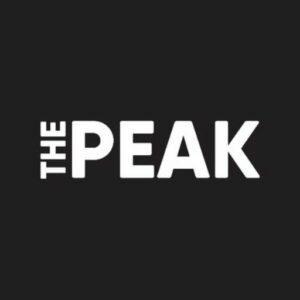By: Yildiz Subuk, Staff Writer
A recent report from the Canadian Association of Physicians for the Environment revealed that 39 different fossil fuel companies across Canada have significantly influenced youth’s climate change education — that is 39 too many. Enbridge, TC Energy, and Fortis BC were among the companies named. Young children are our future collaborators and leaders in a climate that is rapidly changing in harmful ways. Children are especially vulnerable to pollution as they breathe more and have smaller airways; pollution increases their chances of respiratory infection. Still, the education surrounding pollution is hardly ideal — it’s funded by the very companies that profit from it. Young people deserve a wiser approach to a factor that will not only impact but dictate their futures.
“Petro Pedagogy” is used by the report to describe the different messaging strategies employed by fossil fuel companies. Since the 1990s, the industry has shifted from climate denial towards climate delay. The industry initially focused on attacking climate science, but soon realized that growing activism and public doubt in fossil fuels meant they needed a new approach to combatting climate change evidence. They resorted to strategies like “greenwashing” and “bias balance” to exert their influence. Greenwashing is the use of misleading information to make a company’s product appear sustainable, and a biased-balanced approach ensures that lesson plans are framed to include the industry’s perspective to appear less “biased.” This false neutrality positions the industry’s right to destruction as equal to our right to sustainability. Among these approaches peddled to Canadian classrooms, there is also a focus on lessons that shift environmental responsibilities to the individual consumer rather than addressing harmful policies and corporations.
The curriculum successfully uses greenwashing to make oil extraction seem sustainable, while also shifting the blame to consumers for needing and being economically dependent on fossil fuel energy.
For example, Imperial Oil has hosted workshops for tree planting in Sarnia, Ontario, a community they have actively harmed with pollution from their oil refinery. The company gloats about sustainability on its website while polluting so heavily that Sarnia has an area known as the “chemical valley.” Through educational sponsorships and “opportunities” like these, companies build a seemingly respectable rapport with educational institutions and in communities. They appear charitable as a way to divert criticism. In 2014, Suncor partnered with Alberta’s provincial government to create curricula for kindergarten to grade three students, while Cenovus partnered to take care of grades four through 12. As of 2024, the province’s curriculum is to include that Alberta has a “reputation as the most ethical producer of oil in the world” while also reinforcing that energy is essential for the economy. The curriculum successfully uses greenwashing to make oil extraction seem sustainable and further shifts the blame to consumers for needing and being economically dependent on fossil fuel energy. What if instead, we encouraged our youth to innovate alternatives in the face of ecological disaster?
According to Statistics Canada, 62% of Canadian youth agreed climate initiatives should be a top priority. Organizations like Climate Education Reform BC have also emerged as youth mobilize — clearly, they are concerned. However, only 34% of educators feel confident when it comes to teaching about environmental issues. Provincial budget cuts to education are a major factor when it comes to addressing the gap in climate education. Because of these cuts, schools lose valuable funding which would otherwise go to strengthening educational plans. This makes room for the fossil fuel industry to invest in education. Sustainability within the curriculum can only be achieved once schools do not rely on funding and sponsorships from private corporations. Instead of allowing industries to influence and damage our futures, the provincial government should focus on providing adequate resources for educators to tackle the issue. But first, that means we need to convince our peers that education is worth voting for.






















































